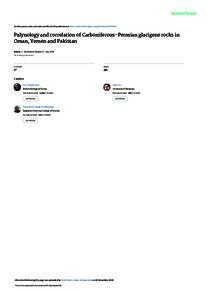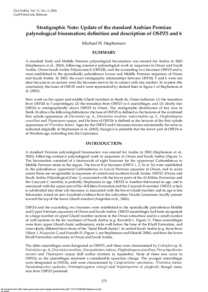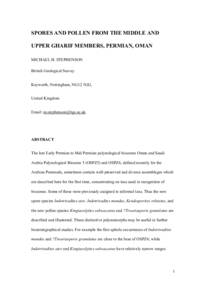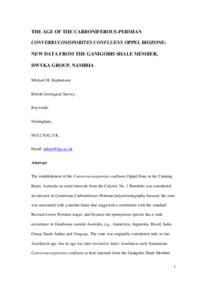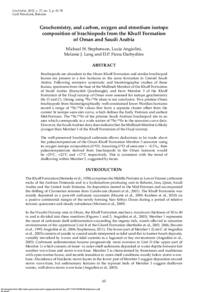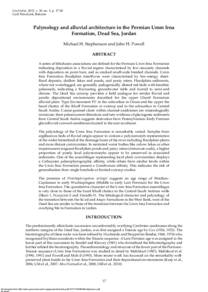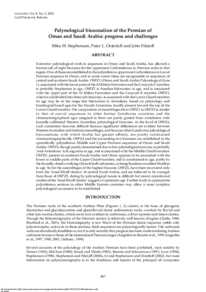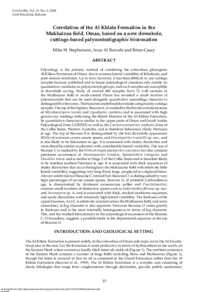Document
Palynology and correlation of carboniferous-permian glacigene rocks in Oman, Yemen and Pakistan.
Identifier
DOI: 10.1016/j.gr.2012.06.005
Contributors
Jan, Irfan U., Author
Publisher
Elsevier.
Gregorian
2013-07
Language
English
English abstract
Palynological assemblages from sections in Yemen and Pakistan are similar enough to allow the application of biozones based on the Pennsylvanian glacigene sediments of interior Oman. Thirty four samples from the upper 84. m of a 125. m thick section of the Tobra Formation at Zaluch Nala, western Salt Range, Pakistan yielded palynomorph taxa including Microbaculispora tentula, abundant monosaccate pollen including Cannanoropollis janakii and Plicatipollenites malabarensis, Converrucosisporites grandegranulatus, Horriditriletes ramosus and Horriditriletes tereteangulatus indicating the late Pennsylvanian Oman 2165B Biozone. Eleven samples from the Yemen Kuhlan Formation, and 22 samples from the underlying Akbarah Formation from approximately 300. m of a section near Kuhlan in northwest Yemen, suggest a 2165A Biozone age (also late Pennsylvanian). This correlation indicates the widespread nature of glacial sediments of a narrow biostratigraphic late Pennsylvanian age range (the Oman P5 unit) in basins across part of the north Gondwana margin. New data from three samples from the Tobra Formation at the Choa Road section near Khewra in the eastern Salt Range, Pakistan are assignable to the earliest Permian 2141B Biozone, indicating a possible correlation between the 'Tobra shale' and the Rahab Shale Member of Oman, which is considered to mark the final deglaciation sequence in Oman.
Member of
ISSN
1342-937X
Resource URL
Category
Journal articles

